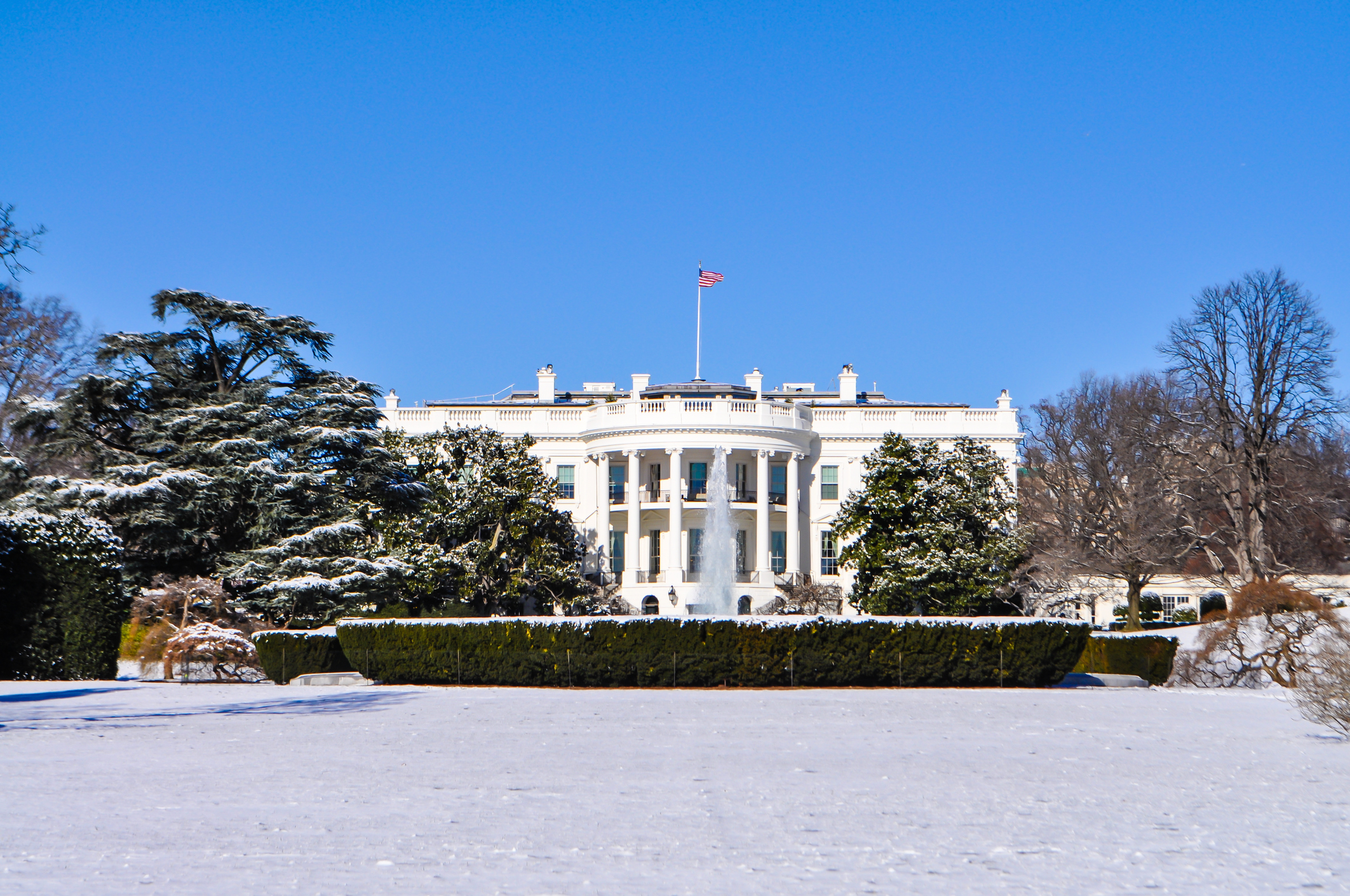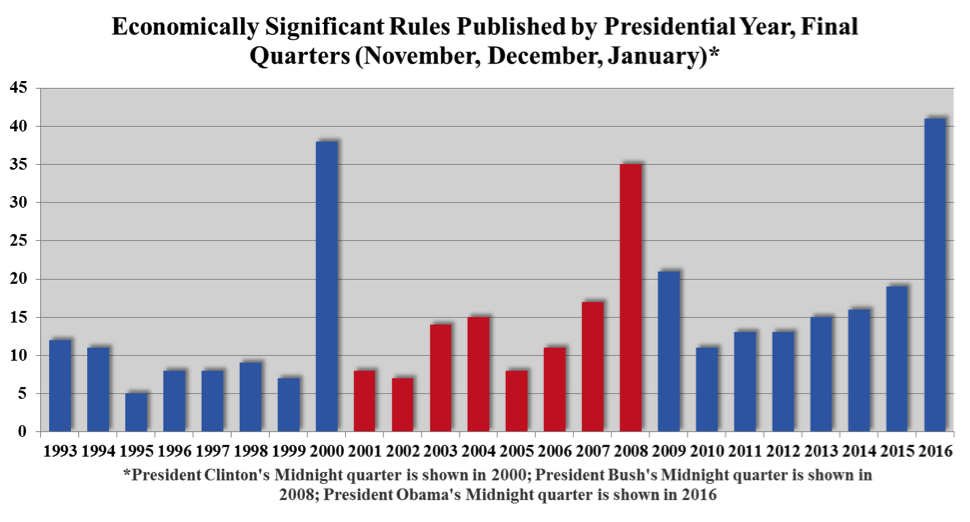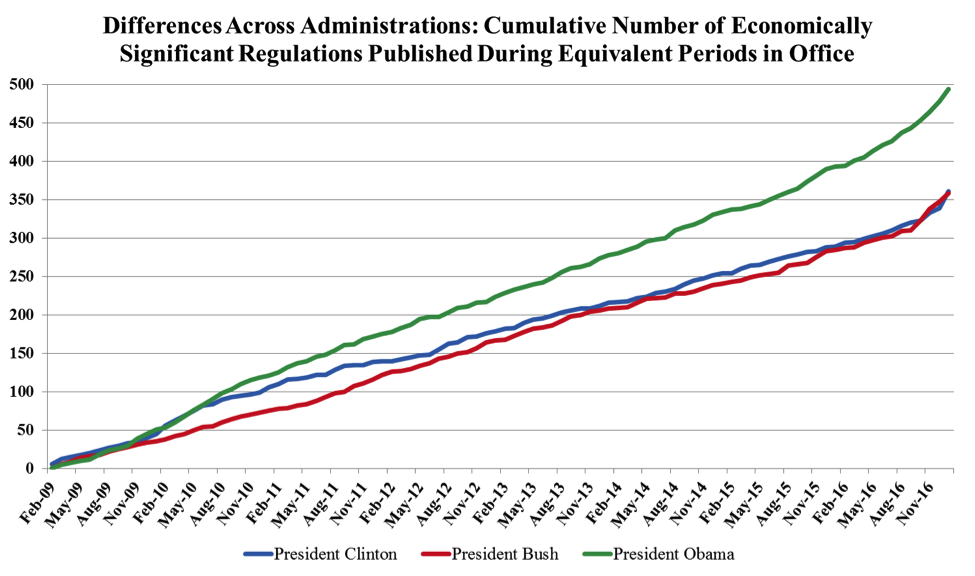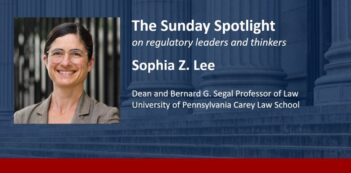
Scholars model the impact of regulations issued in the final months of the Obama Administration.
In anticipation of the final months of President Obama’s Administration, many predicted an upswing in “midnight” regulations. These are rules that are finalized during the three months between Election Day and Inauguration Day, as the outgoing President attempts to cement his regulatory legacy. In a series of essays in The Regulatory Review, we used quantitative models to make similar predictions, drawing on historical data to forecast that President Obama would issue more economically significant rules than Presidents George H.W. Bush, Bill Clinton, and George W. Bush.
Now that the data are in, we find that our forecasts were remarkably accurate: President Obama left office with a bang, issuing 41 economically significant rules between November 1, 2016 and January 19, 2017. As we detailed in our previous essays, significant surges in midnight rules are the norm for outgoing administrations, and they have been for almost 70 years. During the midnight period, both Republican and Democratic presidents have overseen significant increases in regulatory activity. Some onlookers find this trend problematic because the last-minute rush to regulate, according to some studies, has been found to give rise to less thorough regulatory analysis and fewer opportunities for public participation.
When we at the George Washington University Regulatory Studies Center published our report on midnight regulations last summer, we projected that federal executive branch agencies would issue, on average, 12 economically significant rules per month during the final three months of President Obama’s Administration. In order to make these forecasts, we built quantitative models based on publicly available historical rulemaking data and data on President Obama’s rulemaking activity from 2009 to 2015. These models indicated that during last three months of President Obama’s time in office, his Administration issued an average of 13.6 rules per month, showing that President Obama was an even more active midnight regulator than his predecessors.

Source: Authors’ own counts based on publicly available rulemaking data from RegInfo.gov and FederalRegister.gov. See www.regulatorystudies.gwu.edu/reg-stats.
Our forecasts with respect to economically significant rules were also telling. Economically significant rules are those rules expected to result in $100 million or more in annual costs or benefits to the economy. They are the biggest rules, and those anticipated to have the greatest effect on the public. Our models had predicted that the 12 economically significant rules that the Obama Administration issued during the midnight period would have resulted in a minimum of $3.6 billion in annual economic effects—no small feat.
Yet even our forecasted increase fell short of the actual regulatory activity: executive branch agencies have published 41 economically significant rules during President Obama’s midnight period, averaging approximately 13.6 rules per month—roughly three times the Administration’s normal monthly rate. Notably, Sam Batkins of the American Action Forum estimates that just the 33 final midnight regulations with the highest economic impact added up to $40 billion in total costs, or over $8 billion per year.
On top of these economic impacts, the midnight rules also contribute billions of dollars in annual benefits. This last-minute flurry brought President Obama’s total number of economically significant rules over his eight-year term to 481, surpassing both Presidents Clinton’s and Bush’s respective totals of 361 and 358.

Source: Authors’ own counts based on publicly available rulemaking data from RegInfo.gov and FederalRegister.gov. See www.regulatorystudies.gwu.edu/reg-stats.
Some have argued that President Obama’s influx of economically significant rules is not really an increase over past presidents’, because the threshold for economically significant has not been adjusted for inflation over time. However, this claim does not quite hold water: half of the economically significant rules issued during President Obama’s term have annual economic impacts of over $1 billion, and 96 percent of all of President Obama’s economically significant rules would still be considered economically significant even after adjusting for inflation. These increases represent real economic impacts on all Americans—increases that are also driven by the 41 economically significant regulations issued during the midnight period.
Not surprisingly, many of the Obama Administration’s midnight rules were related to the President’s regulatory priorities. These included stricter environmental standards, energy efficiency rules for appliances, and rules implementing elements of the Affordable Care Act. Close to 30 percent of these economically significant rules were issued by the U.S. Department of Health and Human Services.
The regulatory books, however, do not necessarily close at the stroke of midnight. A unique tool available under the Congressional Review Act (CRA) allows Congress more easily to undo some of the regulations that the Obama Administration put in place during the midnight rush. Although Congress has until now only overturned one rule using the CRA’s disapproval mechanisms, each midnight regulation from the Obama Administration would be eligible for a vote under the CRA, as that law’s disapproval procedure extends back to rules issued after June 13, 2016. The use of the CRA could enable the current Administration to undo regulations from the midnight period. What this means is that the final legacy of President Obama’s regulatory agenda ultimately rests in the hands of the 115th Congress and President Donald Trump.





